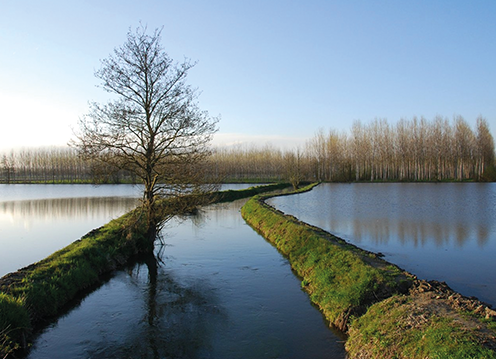MANAGED AQUIFER RECHARGE: OPPORTUNITY AND BARRIERS
Main Article Content
Abstract
In this work an important actual environmental topic is discussed.
Today circular economy conception obliges to organize, in real terms, a complete reuse of an important natural resource as water.
This objective is supported by the development of wastewater treatment processes, which are able to produce effluents more and more improved, to meet the actual very strict quality law standards.
Agriculture is the main water user: for a long time, irrigation canals are the final destination of many WWTP effluents, which are so utilized in rural lands.
The drought of the last years pointed out how wastewater contribution in primary sector irrigation is important.
But the actual is an “incomplete reuse” of purified wastewater: in fact, the WWTP effluents come to agriculture only in the irrigation period (which lasts only four/six months in a year). So, it is natural to conceive a wastewater “complete reuse” (that is: 12 months in a year), by means of an effluent WWTP storage in the “no-irrigation period”.
Between storage forms of water resource, the big artificial reservoirs (to keep rainwater mainly) are important, first of all in southern Italy, for many utilizations.
As a simple and no expensive alternative to artificial reservoirs, the managed aquifer recharge (MAR) is an interesting solution.
In the Annex 2 of this work, it is presented the case of Lomellina (a flat region in Pavia province, northern Italy), where year heigh difference in the surface aquifer is equivalent to an artificial reservoir of many hundreds million cubic meters.
In these cases MAR, which derives from an ancient rural activity – “the winter land submergence” – , represents a very important opportunity for the best water resource utilization.
Of course, many environmental policies require the highest attention to quality level of reused wastewater, because the aquifer has to be protected to the best.
Moreover, the important recent development in WWTP technical management in Italy promotes this practice, which is largely used in many countries.

